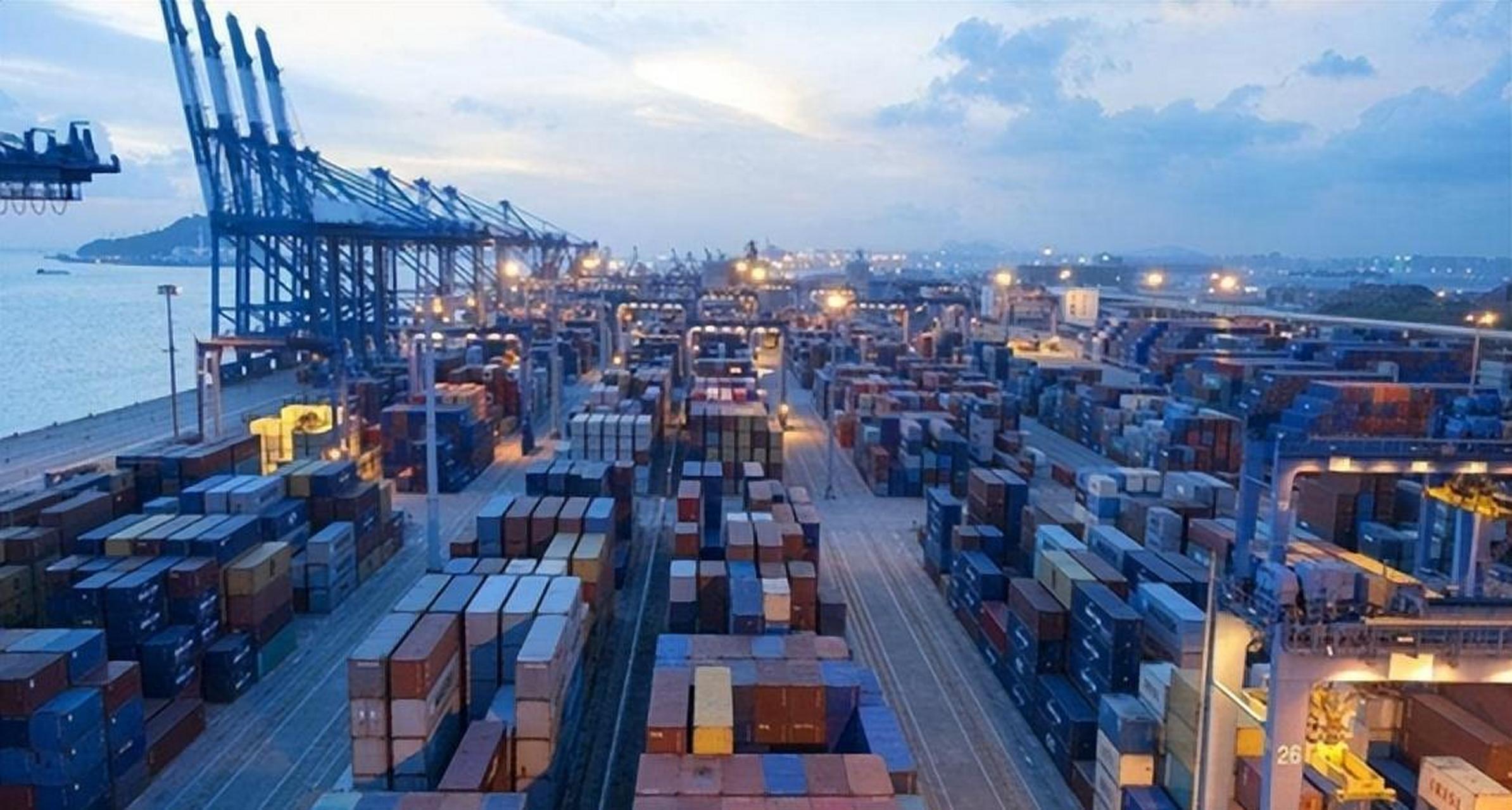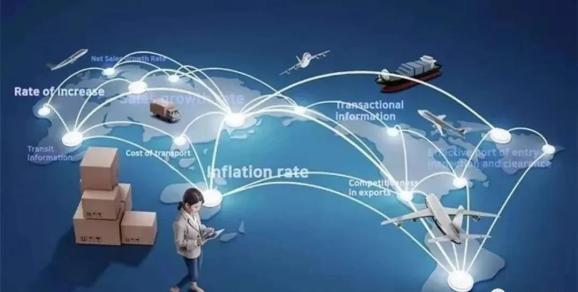1. Profound adjustment of the global digital economy development environment
The sudden new crown pneumonia epidemic has impacted the supply and coordination of the global industrial chain. The shortage of upstream raw materials and core components has caused manufacturing costs to rise, and the weak downstream consumer demand has dragged down the export of general products. In order to avoid regional risks, some supply chains have shifted their production capacity, the industrial chain has accelerated restructuring, and the industry has accelerated reshuffle. Under the influence of multiple backgrounds such as the global economic recession, instability and uncertain factors have increased, international relations and international order have been reconstructed, employment pressure has increased, and the flow of international talents has been restricted, and many digital economy development factors have been affected. On the whole, systemic risks in the world economy have risen, trade protectionism has further risen, geopolitical conflicts have intensified, and the international environment faced by the development of the digital economy has become more complex and more severe.
(1) The world economy is in deep recession, international trade and investment have shrunk sharply
The world today is undergoing major changes unseen in a century. The global pandemic of the new crown pneumonia epidemic has accelerated major changes, and the international economy, technology, culture, security, and politics are facing profound adjustments. The world economy has fallen into the worst recession since World War II. The World Bank predicts that in 2020, 93% of the world’s economies will fall into the Great Recession, economic activity in advanced economies will shrink by 7%, and emerging economies and developing economies will shrink by 2.5 %, there will be a wave of global corporate bankruptcy and unemployment; a historical decline in world trade, the World Trade Organization predicts that world trade will fall by 13% to 32% in 2020, and almost all regions will see a double-digit decline in trade volume North America and Asia’s exports have been hit hardest. The complex value chain industries, especially electronic products and automobile trade, may decline more drastically; world investment is showing a downward trend. The United Nations Conference on Trade and Development predicts that the global foreign direct investment flow in 2020 will be in 2019 It will drop by nearly 40% on the basis of US$1.54 trillion in the year, reaching the lowest level in the past 20 years. It may drop by 5-10% in 2021, and it will not show a recovery growth until 2022. In this context, new models and businesses such as e-commerce, online education, telemedicine, and telecommuting are developing rapidly, traditional industries are accelerating the pace of digital transformation, and the digital economy has become an important force supporting economic development under the epidemic. The focus of development of various countries has gradually shifted from focusing on the quantity and quality of land, manpower, and machines to the level of digital technology and digital development, and the shift from physical space to digital space is accelerating. It will soon show a pattern dominated by digital space, and the digital economy It will become a key starting point for countries to achieve economic recovery and promote transformation and development.
(Two breakthroughs in digital technology innovation, leading the technological revolution and industrial transformation
Digital technology is in a period of major changes led by system innovation, deep integration and intelligence. Countries attach great importance to the innovation and development of digital technology. Technologies such as artificial intelligence, big data, cloud computing, and the Internet of Things have taken shape, and are related to manufacturing, energy, materials, etc. Cross-integration of various fields, quantum computing, future networks and other cutting-edge technologies have shown attractive application prospects, and are rapidly becoming the key areas of scientific and technological innovation in various countries.
Digital technology accelerates integration and optimization, and the vitality of technological innovation is released fissionally. Core technologies such as computing, network, and perception accelerate integration and interactive innovation. Cloud computing has greatly expanded the development model of high-performance computing. Big data has profoundly changed the development direction of high-end storage. Artificial intelligence has comprehensively improved the technical capabilities of sensing and perception. Defining the concept accelerates the intelligent evolution of communication networks. The rapid and profound adjustment of the technical route and development model has promoted the in-depth development of computing network, network intelligence, and sensor intelligence, and greatly stimulated the technological innovation vitality and application potential of advanced computing, high-speed interconnection, high-end storage, and intelligent perception , Driving the exponential growth of technical capabilities and efficiency.
Digital technology and other fields are accelerating integration and innovation, and new application models have developed through breakthroughs. The integration of digital technology with biological sciences, new materials, energy, transportation and other fields has created new industrial forms and business models such as industrial Internet, energy Internet, smart materials, biochips, etc., triggering multi-field, multi-dimensional, systematic, and revolutionary Group breakthrough. Lightweight and intelligent has become the trend of new material technology development, and new material technology is accelerating its development towards intelligence.
Cutting-edge technologies accelerate the research and development process, and comprehensively enhance the national technological innovation capabilities. In the future, new technologies and concepts such as networks, quantum communications, and new cryptography will move from the imagination and concept stage to the research and development stage. Countries attach great importance to the layout of cutting-edge technologies, the industrial structure is facing profound restructuring and adjustment, and the digital technology industry innovation "blue ocean" is taking shape. New breakthroughs have been continuously made in the development and application of quantum technology.
(3) In-depth adjustment of the global supply chain and continuous reshaping of the industrial division of labor
Since the 1950s, the global production structure has undergone profound changes, which are highlighted by the coexistence of the "reverse flow" of manufacturing in developed countries and the "high-end jump" of manufacturing in developing countries. At the same time, global value chains have become a new way to build an international division of labor system. The new crown pneumonia epidemic has further catalyzed the de-globalization and internalization of the industrial chain. The global industrial chain has shown greater vulnerabilities under the impact of the epidemic. Among them, the links of the industrial chain with a high degree of foreign dependence have been greatly affected, which has induced the global industrial chain to shrink and adjust the layout. Some countries support the return of important and key industries to their countries. . The epidemic has caused the international supply chain and market supply and demand to shrink, superimposed on the impact of the world economic macro-control contradictions and the game of interests between countries, and the global industrial chain has been blocked or even broken.
With the development of the digital economy, the digitization trend of the industrial chain is obvious, and the role of digital technology in the transformation and reconstruction of the industrial chain is becoming more and more profound. The new generation of digital technologies represented by the Internet of Things, artificial intelligence, cloud computing, big data, 5G, and blockchain is developing rapidly. The digital transformation of traditional industries has become the main driving force for innovation and development, and the internal combustion engine for high-quality development. With the development and in-depth integration of digital technology on a global scale, digital technology has gradually become a "standardized" circulation medium in the industrial chain. The simple labor links of traditional industries in the global value chain continue to shrink, the trade volume of intermediate goods continues to decline, and the service economy has experienced a negative impact. The industrial division of labor is restructuring rapidly.
(4) Accelerating the construction of a network society, affecting various fields of politics, economy and culture
The network society leads lifestyle changes, promotes the dissemination of culture and values, and deepens the radiant influence of the development of the digital economy on political, economic, and cultural fields. A network society characterized by democratic participation, collective collaboration, decentralization, and self-organization is accelerating its formation. The new generation of digital technology application reform accelerates the innovation of public service models centered on people. Convenient and intelligent terminal equipment and integrated service content form a new model of smart home care. Internet platforms have become an important channel for people to influence political agendas, public policies, and governments to perceive public opinion. Online hearings, online public opinion surveys, online policy consultations, and other diversified electronic participation methods are gradually emerging, constantly increasing the breadth and depth of public participation in politics. The government affairs microblog and government affairs WeChat enable the government and the public to realize a "fingertip dialogue" and successfully build a new bridge for dialogue and interaction between the government and the people. Internet anti-corruption is becoming more frequent, and a new battlefield is being opened up for the protection of civil rights and the supervision of public power.
(5) The digital economy strategy is upgraded to shape new advantages in the development of the digital economy
The international economic situation is complicated, the global economic recovery is weakening, and the world economy is in a shifting period of kinetic energy conversion. Countries around the world are paying more and more attention to the digital economy, constantly upgrading their digital economy development strategies, and grabbing strategic high ground. With the iteration of digital economy development hotspots, digital strategy transformation and upgrading have brought new opportunities for the development of digital economy in various countries.
The digital economy strategy develops from the top-level design to the promotion of digital innovation application capabilities. After the introduction of the top-level design for the digital economy, countries around the world have accelerated their R&D innovation and application development in areas such as big data and artificial intelligence. Countries speed up the formulation of digital rules and promote the formation of a new international mechanism for digital governance.
First, data protection and open sharing have become the new focus of digital strategy. As a key production factor for the development of digital economy, data has become a major focus of countries in formulating digital economy strategies in recent years. The EU General Data Protection Regulation was formally implemented in May 2018, becoming the only and uniform data protection regulation within the EU and a model of global personal data protection legislation. In October of the same year, the "Regulations on the Free Flow of Non-Personal Data within the EU" were issued to ensure the free circulation of non-personal data within the EU, eliminate data protectionism, and enhance the EU's competitiveness in the global market.
Second, many countries continue to enrich platform governance methods. The European Union actively uses anti-monopoly measures and frequently imposes sky-high fines on multinational technology giants. At the same time, the European Commission intends to incorporate subsidies from non-EU countries into the anti-monopoly law and expand its enforcement power accordingly. In addition, the European Commission plans to -2 Introduce or update relevant normative documents within a year, and innovatively use existing law enforcement methods (such as temporary injunctions) to promote data sharing in accordance with laws and regulations.
The third is that major countries have formed relatively complete guidelines for artificial intelligence ethics. In the "Artificial Intelligence White Paper" released by the European Union in February 2020, it is proposed that in the face of ethical concerns caused by artificial intelligence, paying attention to the risks of safety, privacy, and dignity brought by artificial intelligence is the focus of the EU's artificial intelligence strategy and policy . The latest progress in the release of the Global Artificial Intelligence Ethics Recommendation by UNESCO in September 2020, it puts forward the key concepts of the proportionality of artificial intelligence, human supervision and decision, environmental management, and gender equality.
Fourth, digital tax has become a new bridgehead for the formulation of international rules. At present, more than 30 countries, including France, Italy, the United Kingdom, India, the Czech Republic, Turkey, Austria, etc., have announced that they will levy digital taxes on large Internet companies. Among them, Italy, the United Kingdom and other countries respectively A digital tax was confirmed monthly.
2. The global digital economy is developing against the trend amidst changes
In 2019, the international economic environment is complex and severe, the downward pressure on the overall economy has increased, and the global digital economy has maintained rapid growth. The digital economy is advancing steadily in various fields, emerging industries are developing rapidly, and the digital penetration of traditional industries is deepening, which has become more prominent in driving economic growth. Based on considerations such as data availability and country representativeness, this report uses input-output methods to measure the impact of digital technology on the national economy on the basis of obtaining national input-output tables, GDP, ICT industry output and related price data. Contributions, focusing on the quantitative comparative analysis of the digital economy development in 47 countries including the United States, the United Kingdom, China, Japan, and India (see Annex 2 and Annex 3 for the list of measurement countries and measurement methods).
(1) The scale of the digital economy has increased year after year
The overall scale of the global digital economy has risen again. In recent years, the trend of digitalization of the global economy has become more obvious. Traditional industries have accelerated their transformation and upgrading to digital, networked, and intelligent. The scale of the digital economy has continued to expand. The value-added scale of the digital economy has expanded from USD 30.2 trillion in 2018 to 31.8 in 2019. Trillion US dollars, the scale has increased by 1.6 trillion US dollars, and the digital economy has become a new driving force for global economic development. The digital economy of high-income countries accounts for more than 75% of the global share. The scale of the digital economy in developed countries is about three times that of developing countries. The scale of the digital economy in the Americas leads all continents, while the scale of the digital economy in the United States continues to rank first in the world. Relying on its strong domestic market advantages, China is pushing for technological innovation and model innovation. The digital economy ranks second in the world with a scale of 5.2 trillion U.S. dollars, Germany and Japan rank third and fourth, and the digital economy exceeds 20,000 Billion U.S. dollars, the United Kingdom and France rank fifth and sixth, and the scale of the digital economy exceeds 1 trillion U.S. dollars.
(2) The proportion is high, and the proportion of GDP in the digital economy has steadily increased
The status of the global digital economy in the national economy continues to rise. In recent years, the digital economy has become an important part of the national economy of all countries. The proportion of the digital economy in GDP has increased from 40.3% in 2018 to 41.5% in 2019, an increase of 1.2 percentage points. The contribution of the digital economy to the global economy continues to increase.
The digital economy GDP of high-income countries exceeds the global average. From the perspective of different income levels, countries with higher income levels account for a higher proportion of the digital economy. In 2019, the digital economy of high-income countries accounted for 47.9% of their GDP, and the digital economy of middle- and high-income countries accounted for 30.8% of GDP. The country is only 17.6%, and the driving effect of the digital economy in high-income countries on the national economy far exceeds that of high-income and low-middle-income countries.
The proportion of GDP in the digital economy of developed countries is about twice that of developing countries. From the perspective of different economic development levels, the higher the level of economic development, the higher the proportion of the digital economy in the country. The digital economy has occupied a dominant position in the national economy of developed countries. In 2019, the digital economy of developed countries has occupied "half of the country" in GDP. The proportion reached 51.3%, while the digital economy GDP of developing countries accounted for only 26.8%, which is 1.9 times that of developing countries.
The digital economy of the Americas has become more stable in the national economy. From the perspective of the status of the digital economy in the national economy of all continents, in 2019, the digital economy in the Americas accounted for the highest proportion of GDP at 54.4%, Europe ranked second with 37.9%, and Asia followed closely behind, accounting for At 33.7%, Oceania and Africa are relatively close at 19.0% and 18.5% respectively. Leading countries' digital economy accounts for more than 60% of GDP. From the perspective of the proportion of the digital economy in the GDP of a single country, in 2019, the digital economy of Germany, the United Kingdom, and the United States ranked the top three in the proportion of GDP, accounting for 63.4%, 62.3% and 61.0% respectively. In 2019, China's digital economy has further improved its status in the national economy, accounting for 36.2% of GDP and contributing 67.7% of economic growth. However, compared with countries such as Germany, the United Kingdom, and the United States, the digital economy still has more room for development.
(3) The growth rate is fast, and the growth rate of the digital economy has achieved "up against the trend"
The global digital economy is growing rapidly. In 2019, the global economic growth was weak, the growth rate of developed countries slowed down, and the growth momentum of emerging economies was insufficient. In this context, the continued rapid growth of the digital economy contributed a lot to alleviating the downward pressure on the economy and driving the recovery of the global economy. It is estimated that in 2019, the average nominal growth rate of the global digital economy is 5.4%, which is 3.1 percentage points higher than the nominal growth rate of global GDP during the same period. The digital economy has become a key driver for stimulating economic growth, alleviating downward pressure on the economy, and driving economic recovery. The growth momentum of the digital economy in high- and middle-income countries is released.
Middle and high-income countries have concentrated most of the emerging economies. With market advantages, cost advantages, and late-mover advantages, the digital economy is growing rapidly. The growth rate of the digital economy in developing countries far exceeds that of developed countries. In 2019, the digital economy of developed countries grew by only 4.5% year-on-year, while the digital economy of developing countries achieved 7.9%












